January arrives quietly, the sparkle of the holidays fades, the air grows calm, and your home suddenly feels like it’s exhaling after the festive rush. It’s the perfect moment to breathe new life into your surroundings.
After weeks of decorations, gatherings, and glitter, many of us crave simple spaces that feel lighter, calmer, and intentional. That’s where Minimalist January Home Styling Ideas come in.
Minimalism in January isn’t about stripping everything away. It’s about balance, keeping what feels warm and meaningful while letting go of the rest. By focusing on clean lines, neutral palettes, and subtle texture, you can create a home that feels peaceful yet deeply inviting.
These nine ideas will guide you to refresh your home, one mindful change at a time, no major overhaul required.
Before you begin, explore these January Home Décor and Storage Refresh Ideas for more ways to align minimalism with functionality.
In This Guide, I’ll Cover
Toggle1. Create a January Mood Palette
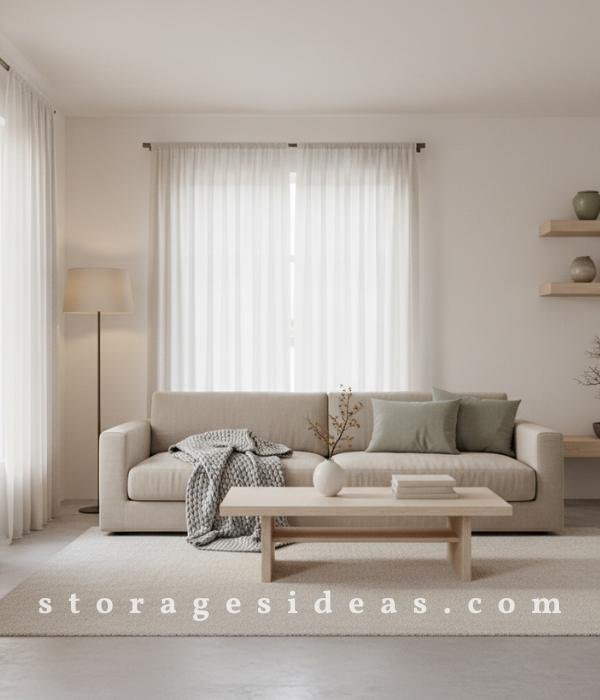
Every fresh start begins with color, and January is the month of quiet tones, soft transitions, and earthy calm. After the visual chaos of the holidays, your home deserves to exhale, too.
Think of your palette as your January “reset button.” Move away from the bright reds, metallics, and festive hues of December, and step into a world of gentle neutrals: ivory, oatmeal, sand beige, foggy gray, and soft cream.
These muted shades help your eyes relax, allowing your mind to follow. But minimalism doesn’t mean monochrome; it’s about harmony. Choose one grounding tone like olive, clay, or charcoal to anchor the palette and create a subtle sense of depth. This single tone can reappear in small accents throughout your space, like vases, cushions, or ceramics, creating an effortless flow.
If your walls feel heavy, consider a quick paint refresh in a soft white or greige tone. A new color can instantly brighten and modernize a room. Even smaller changes switching cushion covers, art prints, or area rugs, can reset the overall atmosphere.
Pro tip: Use texture, not color, to build contrast. Linen next to wood, wool beside metal, these tactile layers create richness within your minimalist tone range.
The result is a home that feels renewed, cohesive, and quietly sophisticated, perfectly aligned with the calm rhythm of January.
2. Simplify Seasonal Decor Transitions
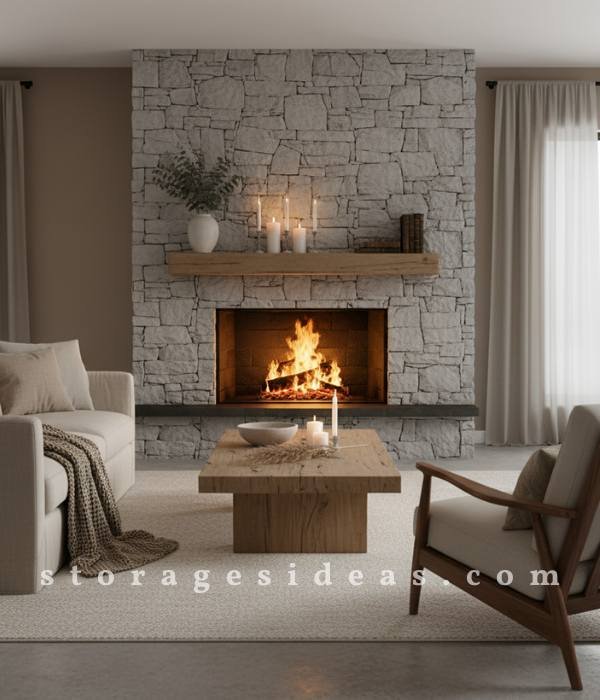
January can feel like a design gray zone, too late for tinsel, too early for tulips. But that’s exactly why this transition period is so special. It gives your home a chance to shift gracefully from festive abundance to minimalist calm.
Start by removing the overly seasonal elements: anything glittery, themed, or vibrant red and green. But instead of clearing everything out, transition thoughtfully. Keep decor that still feels winter-appropriate: knit throws, wooden trays, pine branches, or candles. These elements carry warmth into the new season without feeling out of place.
You can also repurpose certain pieces. A garland, for instance, can be stripped of ornaments and left as simple greenery across your mantel. Glass ornaments can be replaced with ceramic bowls, vases, or stacks of neutral books. Even a wreath can stay if reimagined with dried stems or a minimalist base.
To enhance the minimalist tone, introduce symmetry and balance. Keep fewer items on each surface, but allow them space to breathe. A single vase with a few branches can look more elegant than a shelf full of trinkets.
Lighting plays a key role here too, shifting from twinkle lights to soft ambient lamps or a single candle’s glow. The result is a clean, intentional home that still feels warm enough to enjoy through the colder months.
For more guidance on this transition phase, check out The Spruce’s Minimalist Home Decorating Tips, full of practical design wisdom.
3. Let Light Be Your Friend
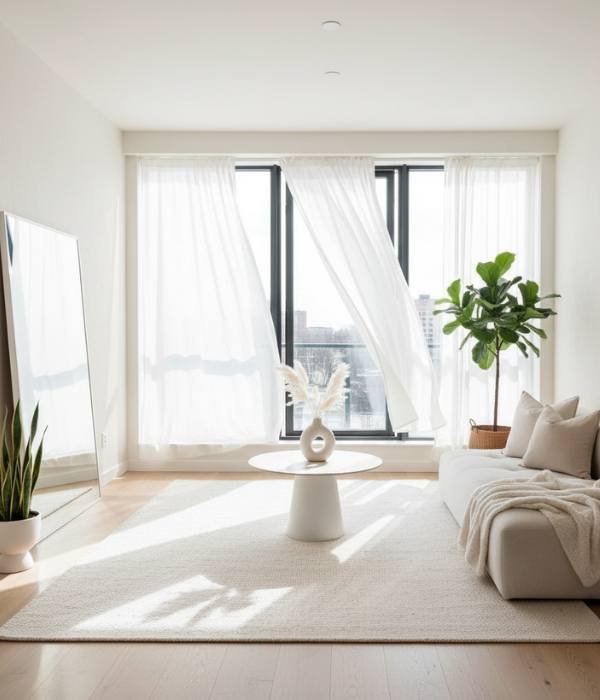
In the heart of winter, light becomes everything. It has the power to shift mood, highlight texture, and make your minimalist space come alive.
Start by maximizing natural daylight: pull curtains wide, keep window sills clear, and remove anything that blocks sunlight. Clean windows can surprisingly make a big difference in how your home feels.
For artificial lighting, opt for warmth. Layer your lighting instead of relying on harsh overheads. A combination of floor lamps, table lamps, and subtle string lighting can create an intimate glow that feels calm and cozy.
Minimalism thrives on balance, and light is its most powerful tool. Let soft illumination play with your textures and tones to elevate simplicity into something beautiful.
4. Refresh Textiles with Neutral Layers
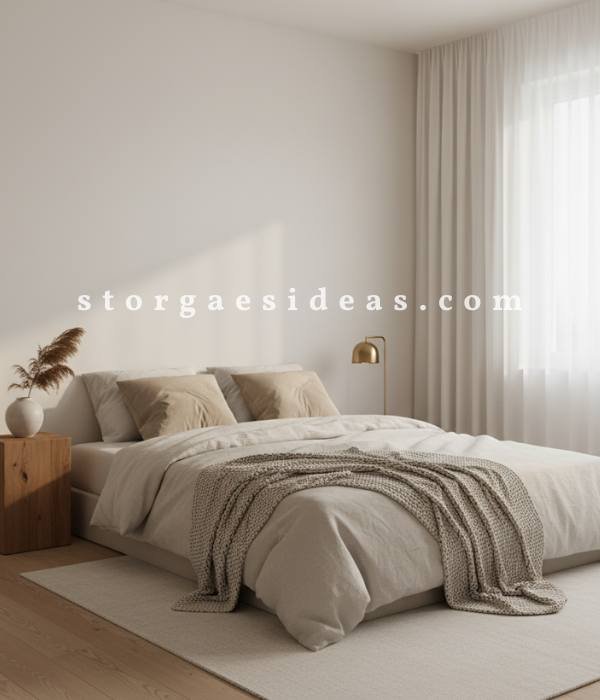
After the holidays, our homes often feel heavy. Thick blankets, bold plaids, and deep jewel tones can make spaces feel weighed down. January’s refresh is about reintroducing softness and breathability through fabrics.
Begin by evaluating your soft furnishings: blankets, cushions, curtains, and rugs. Pack away richly patterned or dark-toned fabrics, and bring out lighter, textural alternatives. Focus on quality over quantity. Every textile you keep should have a purpose and a feel-good factor.
For example, swap thick velvet cushions for linen or cotton ones in shades like ivory, oatmeal, or greige. Replace dense, dark throws with light wool or knitted textures that still offer warmth without visual heaviness.
Introduce layers not to clutter the space, but to add tactile comfort. A folded blanket at the end of the bed, a soft rug near your reading chair, or a draped throw over your sofa can transform the atmosphere instantly.
You can also use textiles to balance minimalism’s clean lines. Bouclé, nubby linen, and soft knits introduce the depth that minimal interiors often lack.
If you want a subtle statement, add one item with a slightly different texture, perhaps a fringed wool pillow or a woven ottoman. It keeps the palette cohesive but visually engaging.
This idea embodies the minimalist mindset: simple, soothing, and deeply functional. By changing how your home feels rather than how much it holds, you create a space that welcomes calm every time you walk in.
5. Embrace Nature & Organic Elements
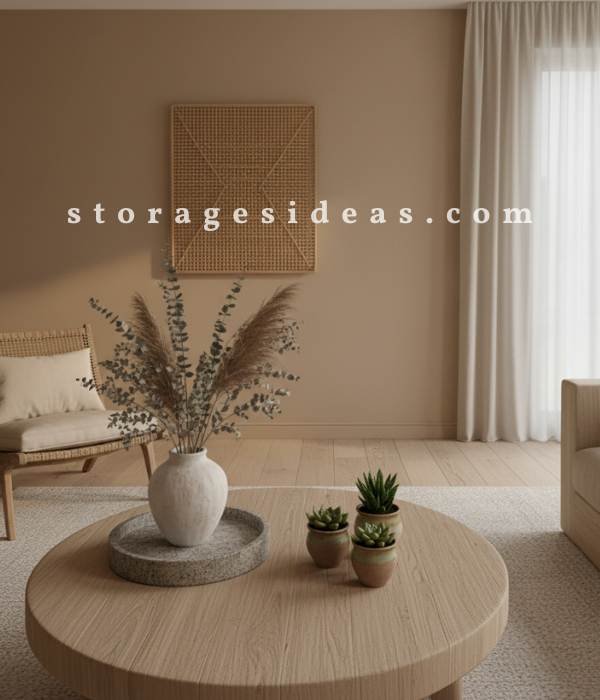
There’s something about January that makes us crave grounding a connection back to nature after months of glitter and artificial décor. Bringing in organic elements is one of the easiest and most transformative ways to style your home minimally yet warmly.
Start with greenery, but think beyond traditional potted plants. Branches with clean lines, dried pampas grass, or eucalyptus stems arranged in a ceramic vase can look striking and last for weeks. The simplicity of their form adds elegance without distraction.
Then, introduce natural materials. Wood instantly brings warmth; stone adds strength and balance. Mix matte ceramics with woven textures like rattan, bamboo, or jute to soften sharp corners and cool surfaces. Even a small wooden stool or a rough clay pot can shift the mood of an entire room.
You can pair this with inspiration from our Rustic Winter Décor Hacks for Small Spaces for a more organic, grounded look.
One subtle touch many overlook: scentless candles in raw holders or bowls filled with pinecones. These small organic moments layer beautifully into a minimalist home.
Also, consider your surfaces: swap shiny trays for natural stone or wood platters, or replace metallic décor with neutral-toned ceramic vessels. This transformation adds both visual and tactile serenity.
By embracing these natural textures, you invite nature’s imperfections inside the knots in wood, the uneven glaze of pottery, the curl of a dried leaf. These details make your minimalist home feel human, soulful, and alive, the very essence of January’s quiet beauty.
6. Curate with Intention: One Statement, Many Scenarios
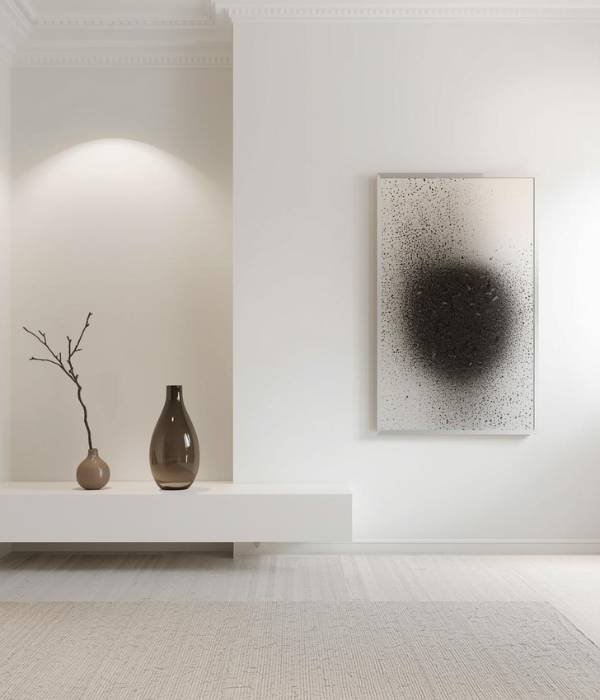
Minimalism doesn’t mean bare or boring. It means curating every detail with purpose. Instead of filling every corner, focus on one standout piece per area, something that commands quiet attention.
This could be a sculptural vase on the dining table, a single large framed print on the wall, or an art object displayed against a blank backdrop. Give each piece breathing room. Negative space isn’t emptiness; it’s part of the composition.
Rotating your statement items seasonally keeps your home dynamic without adding clutter. When everything you display has meaning, your space naturally feels more elevated and personal.
Intentional curation turns simplicity into sophistication, and that’s the heart of Minimalist January Home Styling Ideas.
7. Add Texture Through Art & Wall Accents
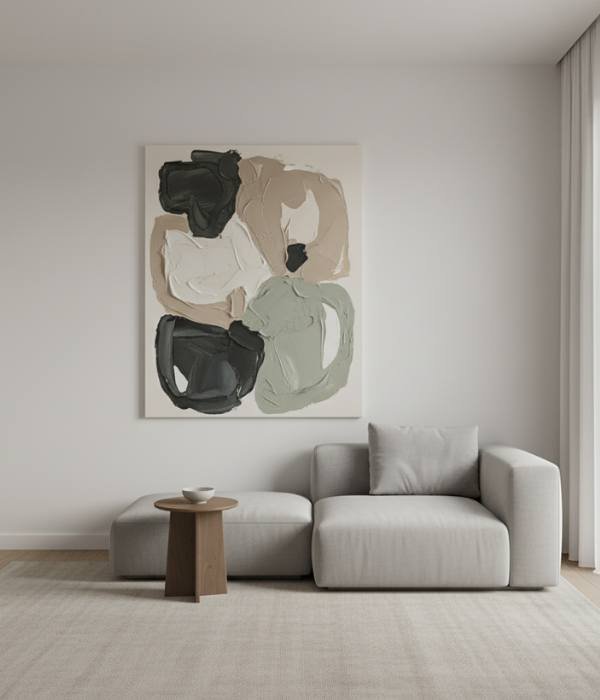
Minimalist walls don’t have to feel cold or empty. The right wall treatment can add depth and warmth without disrupting your clean aesthetic.
Start with large-scale, neutral-toned pieces that complement your palette. Abstract line drawings, soft watercolor prints, or black-and-white photography all fit beautifully within a minimalist setting. If you prefer something tactile, woven wall hangings or linen-covered frames can add a cozy, understated texture.
For a bolder approach, try subtle 3D wall panels or raw plaster finishes that catch light naturally. These materials make walls visually engaging without needing bold colors or excessive decor.
Your goal is to make your space feel lived in but not crowded, expressive yet restrained. Texture is your new form of decoration.
8. Rearrange to Rediscover Flow
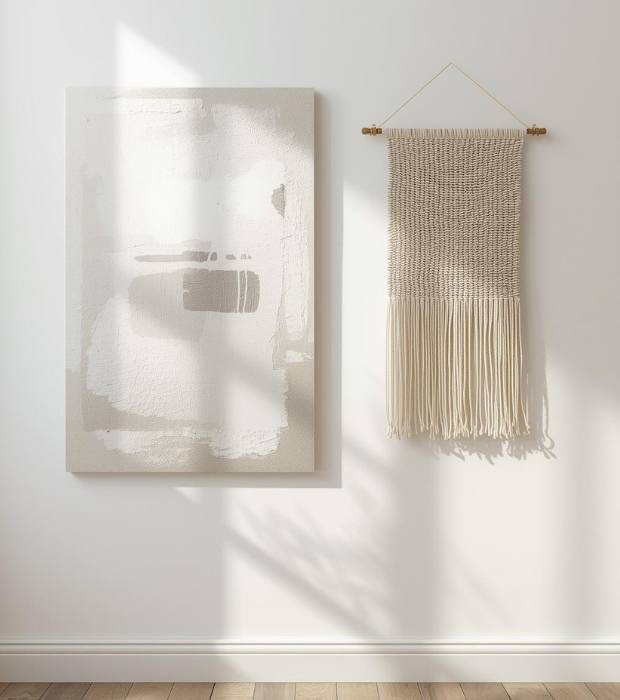
Sometimes, the best home refresh costs nothing. Rearranging your layout can completely change how your space feels, even when you haven’t bought a single thing.
Start small. Move your sofa slightly off the wall to create a cozier seating zone. Angle a chair to open up sightlines. Swap furniture between rooms to test new perspectives. Every shift can reveal how light, function, and flow interact differently.
Minimalism thrives on openness, so leave space around key pieces and ensure movement feels easy. You’ll often discover that your home didn’t need more things; it just needed a new rhythm.
Want more flow and layout inspiration? Visit Apartment Therapy’s Minimalist Home Tours for creative, real-world examples.
9. Maintain with Simple Systems
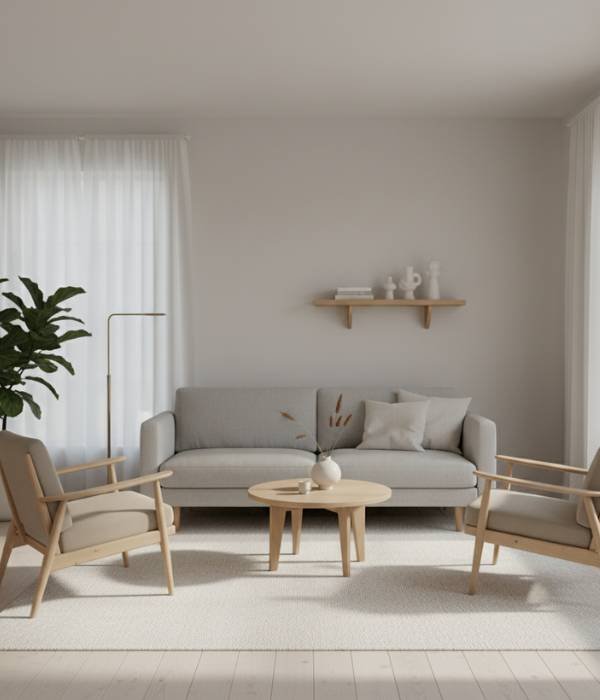
Minimalist homes stay serene not because they’re styled once but because they’re maintained effortlessly. The final idea focuses on creating small, sustainable habits that keep clutter from creeping back.
Start with the “one in, one out” rule whenever you bring a new item home; let go of something similar. Keep baskets or drawers labeled by purpose so every item has its place. Build five-minute daily resets into your evening routine: fluff cushions, clear surfaces, and tidy high-traffic areas.
Hidden storage is your best friend. Bins that slide under furniture, woven baskets, and neutral-toned organizers help you maintain function without visual noise.
Remember, minimalism isn’t perfection; it’s consistency. When you develop systems that fit your life, simplicity naturally becomes your default.
Conclusion
January is more than just the start of a new year; it’s an invitation to slow down, simplify, and reconnect with what truly matters in your space.
These Minimalist January Home Styling Ideas are about more than design; they’re about mood, clarity, and intention. By embracing soft light, natural textures, and a cohesive palette, you can create a home that feels renewed, not redone.
If you loved this, read our Simple Winter Décor Refresh Ideas for Your Home next. It pairs perfectly with these minimalist transformations.
Start small. Change one corner, one color, one surface at a time. You’ll notice how simplicity transforms not only your surroundings but also your mindset. Because when your home feels calm and clear, the rest of your year tends to follow.

